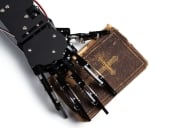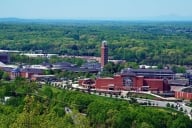You have /5 articles left.
Sign up for a free account or log in.
Some of us entrust our innermost thoughts to clergy, but how much do we really know about their education? On Friday, the Carnegie Foundation for the Advancement of Teaching released the results of a three-year study aimed at shedding some light on that question.
The diverse range of students who are entering religious professions -- including more female and minority students than ever before -- has forced educators at seminaries nationwide to question what “good teaching” means for different students, according to researchers with the foundation.
Educators -- whether they teach at Roman Catholic, Orthodox Christian, Protestant or Jewish seminaries -- “no longer have a clear picture” of what kind of student will enter their institutions, said Charles R. Foster, director of the study, in a Friday telephone briefing. “They can’t assume that all students are the same anymore.”
With case studies, the report highlights the educational efforts at 18 “well representative” religious schools of various religious backgrounds, including Yale Divinity School, the Jewish Theological Seminary and the Associated Mennonite Biblical Seminary. Based on surveys of faculty, students and alumni as well as observational research, researchers concluded that “clergy education has a wide diversity of teaching practices,” including classroom learning, communal education and pastoral modeling.
Concurrently, there is a “set of intentions for student learning” shared by many clergy educators. These intentions include helping students interpret texts, situations and relationships as well as fostering an understanding of historical and contemporary religious contexts.
Even with diverse and fixed teaching methods in place, researchers indicated that diversity of students is one of the greatest challenges facing religious educators today. One example they noted involved mainline Protestant institutions, which tend to have less aggressive faith and philosophy requirements than do Catholic and Jewish seminaries. “They have to deal with students who just found God,” as well as those who have been steeped in religion since their early childhood, said Lawrence A. Goleman, director of the Sacred Visions and Social Goods Program at Dominican University.
While noting that such situations are complicated -- and spread far beyond the teaching of Protestant religion -- researchers said that educators at religious institutions involved in the study have been “energized to think about their teaching practices,” and how best to serve individual students.
Interviews with 121 alumni, however, indicates that new clergy often unprepared for their jobs. More than 80 percent reported feeling unequipped for the financial, managerial and administrative roles that they immediately encountered as practicing clergy members. The researchers didn’t discuss the details or implications of that finding.
While researchers said that the study was not intended to provide recommendations, Goleman did highlight the importance of what he called the “intersection of the community and classroom” for learners. He said that the “apprenticing” of the profession often helps students learn how to apply their knowledge upon graduation.
“It takes at least two or three villages” to raise a priest, rabbi or other clergy member, said Goleman.
A summary of the report is available online, along with information about ordering the full report, which costs $40.








